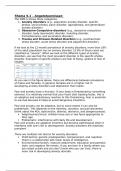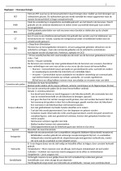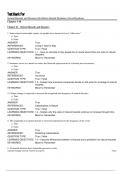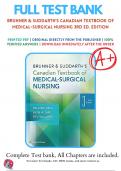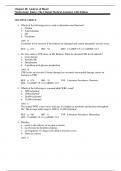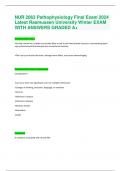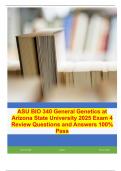Summary
Complete summary Developmental Psychology and Psychopathology (P_BOWPPSY) - Psychology period 6 (theme 5-8)
- Course
- Institution
- Book
In this summary, you will get all the material you need to know for the Developmental Psychology and Psychopathology exam in period 6 (themes 5 to 8). Last year, I obtained my propaedeutic with my own summaries. This summary consists of all lectures (fully typed out) and additions from the literatu...
[Show more]
